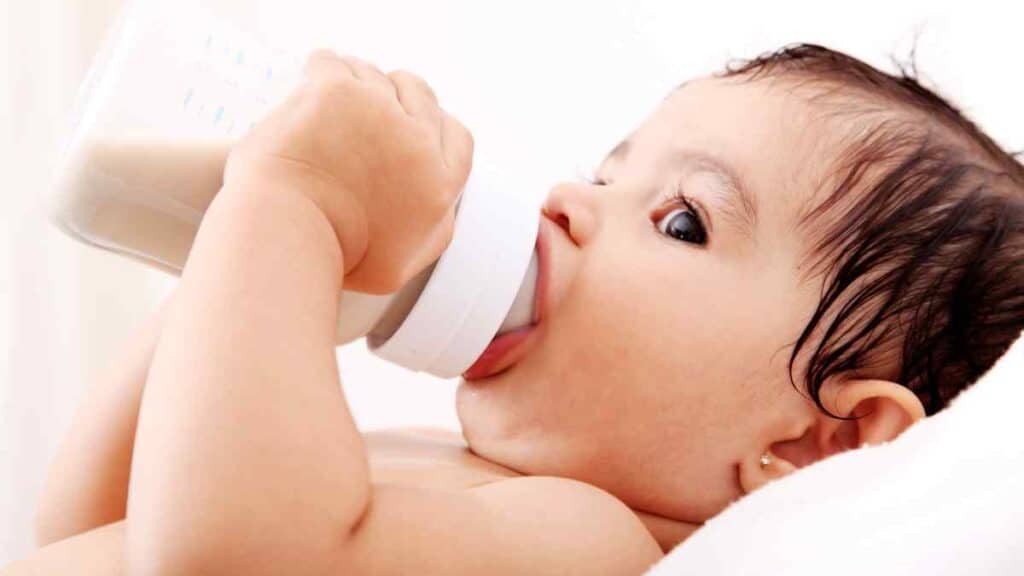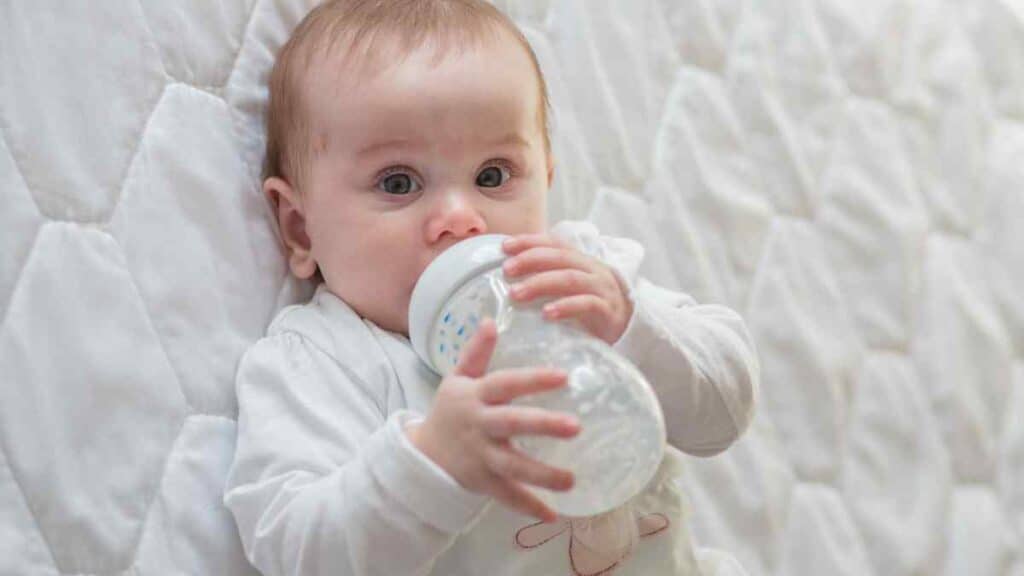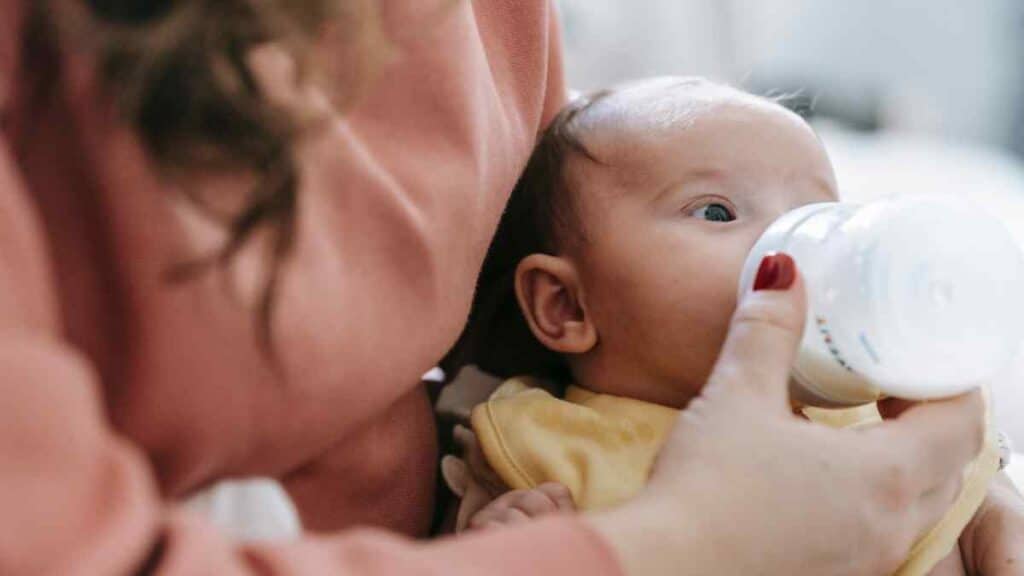Infant formula is an excellent source of nutrition for many babies, especially when breastfeeding is not an option. Parents often ask if reheating prepared and refrigerated formula is safe. With bacterial growth and nutrient degradation concerns, the idea of reheating baby formula can be confusing.
Fortunately, this content may shed light on parents in a dilemma between reheating or disposing milk formula. This article will explore the dangers and advantages of reheating infant formula, providing practical advice to help parents make informed decisions about feeding their babies. Continue reading if you’re interested to learn more.

Warming Pre-Prepared Formula
Pre-prepared infant formula can be a lifesaver for new parents, but it can also be a source of stress if you’re not sure how to warm it properly. Here are some tips for safely warming a pre-prepared baby formula:
Room temperature: You can give the formula to the baby if it is already at room temperature. This is the easiest and quickest option.
Hot water: Fill a bowl with hot tap water and place the formula bottle. Make sure the water is not too hot, and test the formula on the inside of your wrist before giving it to the baby.
Microwave: Experts do not recommend microwaving formula because it can create hot spots and lead to burns. If you must use a microwave, warm the formula for a few seconds, shaking well in between, until it reaches the desired temperature.
Stovetop: Boil water in a pot on the stove, then place the formula bottle in a bowl of hot water. Stir frequently until the formula reaches the desired temperature.
How Many Times Can a Baby Formula be Reheated?
You can reheat infant formula only once, and you should dispose of any remaining formula immediately after an hour of feeding. That’s because there’s a considerable chance that you can increase the risk of bacterial growth when you reheat baby formula, which can harm your baby’s health, especially if they have a weakened immune system. Furthermore, repeated heating can cause the nutrients in the formula to break down, reducing their nutritional value.
It’s best to prepare the formula fresh each time and only heat what your baby will consume in one feeding. Discard any leftover formula and do not save it for later to prevent harmful bacteria from contaminating your infant formula bottle.
It’s also important to note that heating the formula too much or too quickly can also be harmful, as it can cause the formula to lose its nutritional value and potentially create hot spots that can burn your baby’s mouth. Use a bottle warmer or slowly warm the formula in a pot of warm water to ensure it heats evenly.

When Is it Safe to Reheat Formula
One of the questions that often arises is whether it is safe to reheat formula products. The answer is complex, as there are several factors to consider when reheating baby formula.
- You should never re-boil formula, whether it is powdered formula or breast milk. That’s because boiling formula destroys essential nutrients and can also change the taste, making it unpalatable for the baby.
- When you reheat the formula, it’s essential to do it safely. The recommended temperature for the formula is around 98°F, which is the same as a regular body or room temperature [1]. Use a bottle warmer or a bowl of warm water to ensure the formula heats evenly. It’s also best to follow the manufacturer’s instructions to determine if you’re doing it right. Also, avoid using a microwave to reheat the formula, as this can heat the formula unevenly, causing hot spots that could burn the baby. Even more, microwaves can cause the ready-to-feed formula to overheat quickly, which can be dangerous to your child.
- Consider the type of formula you use. Ready-to-feed formula is already sterile and doesn’t need heating. Make powdered formula fresh for each feeding because you can’t store it safely for later. You can reheat concentrated formula, but you must use it within 24 hours of opening the can.
- When you reheat formula milk for preparing bottles, it is important to check the temperature before giving it to the baby. An excellent way to do this is to use a food thermometer. Gently stir the formula. Discard any heated formula not used within an hour. It’ll prevent the bacteria from your baby’s saliva from growing.
How Long is Formula Good After it’s Mixed?
For Premade Formula Bottles
Ready-to-feed or premade formula is already sterile and doesn’t require mixing. It’s also consumable for 48 hours, even after opening the canister, as long as you put it in the refrigerator to prevent bacteria from growing. Once the 48 hours is up, it’s no longer advisable to reheat the ready-made formula. Instead, you must throw away unused formula to prevent bacterial growth, which can make your baby sick.
Cow Milk Protein-Based Formula
Powdered formula, the most common infant formula today, consists of powder mixed with water. Serve it either warm or cold.Prepared formula made with cow’s milk powder is a practical alternative to breast milk as it is easy to prepare. Serve fresh formula to your baby, but discard any remaining warm formula.
Concentrated Baby Formula
Cow’s milk is another type of formula you can mix with water. This milk formula can be served within 24 hours after opening the can. However, you need to store it inside the refrigerator to prevent the bacteria from growing. After a day, any remaining formula should be thrown away as it is no longer advisable to reheat formula made with a concentrated bottle.

Can I Put the Heated Formula Back in the Fridge?
If you have heated formula that your baby has not finished, you may be wondering if you can put it back in the refrigerator. The answer is no. It’s not advisable to put the heated formula back in the refrigerator. This is because when you reheat baby formula, the bacteria can proliferate at room temperature, making the formula unsafe for consumption.
Instead, any heated bottle of formula that has yet to be used within one hour should be discarded. Doing so helps reduce the risk of bacteria growth and ensures that your baby gets the best possible nutrition as you prepare formula safely.
When Should I Start Preparing A Bottle?
It’s only normal for parents and caregivers to want to ensure that their baby is fed and comforted as soon as they are hungry. However, infant formula preparation takes time, and you may wonder when is the best time to start or even how much formula you need to prepare. The answer will depend on several factors, including your baby’s age, feeding patterns, and your routines.
For newborns, it is best to prepare your baby’s bottle just before feeding. This helps to ensure that the formula is at the right temperature and fresh. As your baby grows, its feeding patterns may become more predictable, allowing you to prepare baby formula bottles in advance, which can be helpful, especially when there’s no breast milk available.
Store prepared formula in the refrigerator and use within 24 hours. Discard any formula left at room temperature for over two hours to prevent bacterial growth.
Using A Formula When Traveling
Traveling with a baby can be a challenging experience, especially when it comes to feeding. So, if you’re using a bottle of formula to feed your baby, it is important to take extra precautions to ensure that you have a safe and worry-free trip.
One of the most important things to consider when using a formula when traveling is storage. If traveling by car, keep formula in a cooler with ice packs. On a plane, have formula in your carry-on for TSA inspection.
Preparation
When it comes to preparation, it is essential to follow the safe storage guidelines printed on the label. A formula should never be re-boiled when reheating formula, as boiling destroys essential nutrients and can change the taste. Instead, use a bottle warmer or a bowl of warm water to heat the formula to the right temperature, which is around 98°F. Also, never attempt to microwave formula, as it can cause scalding in the baby’s mouth.
If you are using a ready-made formula, it is essential to pack extra supplies, such as bottles, formula, and wipes. Doing so will help ensure you don’t leave anything necessary for feeding, even if you are in a rush.
Also, remember to be flexible when using formulas when you’re traveling. Your baby may have different feeding patterns when they’re not at home. So, it’s best to stay prepared and take the necessary precautions to save formula products.
If your baby is less hungry, extend the time between feedings. If hungrier, feed more frequently. It’s also important to know how much formula you need to save time when preparing your baby’s milk.

Summary
Many people would agree that reheating the formula is only advisable in some cases as it can alter its chemical composition and taste. Also, when you reheat baby formula in a microwave, it can cause hot spots to form. Thus, potentially putting your child in danger.
But if you plan to reheat formula products, then it’s best to use a bottle warmer or give the baby bottled water a bath in warm water to reheat formula milk. It’s also best to discard any remaining formula or leftover liquid formula at room temperature for more than two hours as part of your disease control precaution.
Did this article help you? Comment down below if you have a question. We’re here to help!



